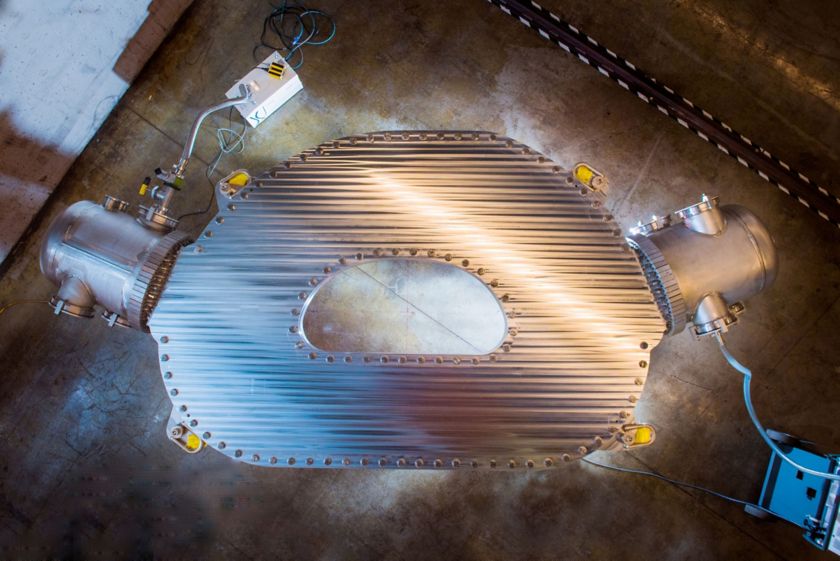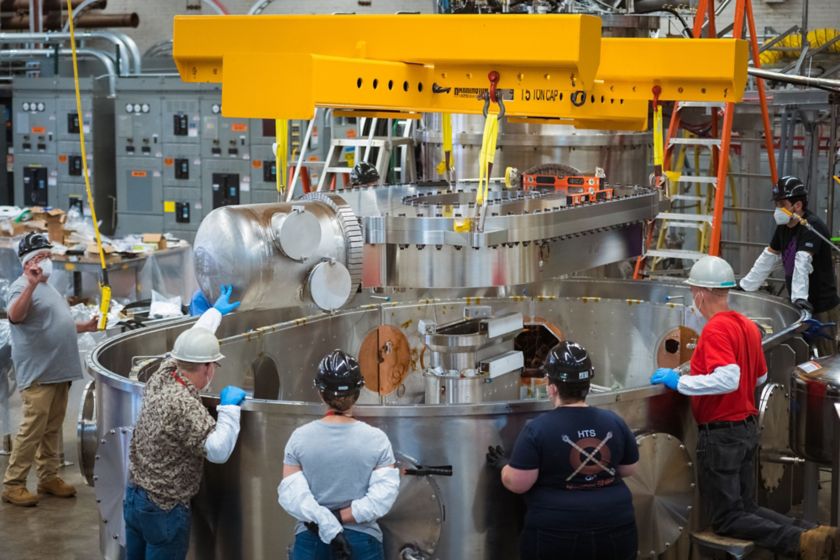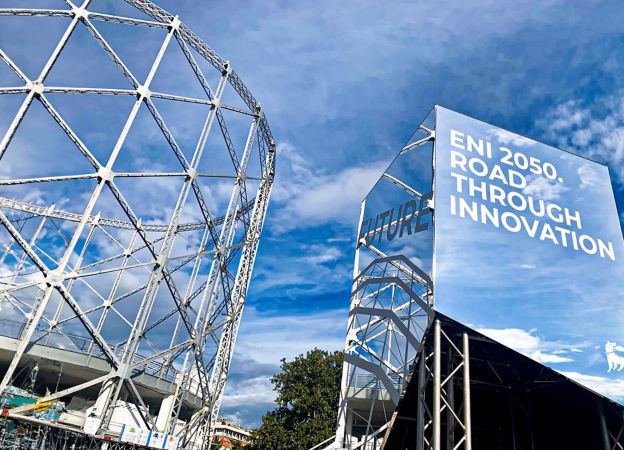10
tonnes
weight of one magnet

Or , our new artificial intelligence tool.
We are a strategic partner of the company CFS for the industrial development of magnetic confinement fusion.

We collaborate with Commonwealth Fusion Systems (CFS) to accelerate the industrial development of magnetic confinement fusion. A milestone has already been reached with the testing of the first prototype magnet with high temperature superconductor (HTS), a technological breakthrough that marks a decisive step towards more compact and efficient fusion plants. In 2025 we strengthened this collaboration with a strategic commercial agreement to purchase decarbonised electricity from ARC, CFS’s future fusion power plant in the United States. ARC is expected to be the world’s first industrial-scale plant able to feed fusion-generated electricity into the grid with a process that produces no CO2 or other greenhouse-gas emissions. The agreement provides for joint work to accelerate the plant’s development through operational activities, technology support and the sharing of design methodologies informed by Eni’s experience in the energy sector. CFS is currently building the SPARC demonstrator, designed to confirm net energy from fusion and to collect essential data to build ARC and the subsequent industrialisation phase.

Commonwealth Fusion Systems' Magnetic Confinement Fusion Laboratories

Commonwealth Fusion Systems' Magnetic Confinement Fusion Laboratories
Magnetic confinement fusion is one of the most promising technologies for the energy transition: it can generate large amounts of zero-emission energy, safely and virtually without limit. The reactor we are developing with CFS is compact and efficient and it is based on a tokamak configuration enabled by innovative high-temperature superconducting magnets.
Some figures to outline the results of the partnership.
weight of one magnet
present in one magnet
present in the future SPARC experimental reactor
superconductor ribbons in a magnet
The magnetic confinement fusion reactors that have been designed in most research programmes use magnets with low-temperature superconductors (LTS), which require temperatures close to absolute zero (-273 °Celsius). However, this technology requires very large machines. The solution proposed by CFS, on the other hand, uses innovative industrial superconductors made from Rare Earth Barium Copper Oxide (ReBCO) which are known as High-Temperature Superconductors (HTS) because they “only” require temperatures of around - 253° Celsius. These superconductors can also create very strong magnetic fields. These differences make it possible to create reactors that are much more compact and efficient compared to those designed until now.
degrees Celsius temperature reached by the plasma inside the reactor
density of the magnetic flux density created by the magnets
operating temperature of the HTS superconductors
electric current intensity in the superconductors
Eni and CFS announce the signing of a Power Purchase Agreement (PPA), valued at an estimated $1 billion, for Eni to purchase decarbonised electricity from ARC, CFS’s future fusion power plant in the United States.
The key milestones of the research to produce fusion energy, which began in 2018 and is still ongoing.
CFS involves the entry into operation of the ARC plant to feed energy into the grid and the use of the first plasma in the Divertor Tokamak Test experimental reactor.
By the second half of the 2020s, CFS expects to start up the SPARC experimental reactor, designed to handle and confine plasma and to achieve a positive net energy balance.
Eni and CFS announce the signing of a Power Purchase Agreement (PPA) for Eni to purchase decarbonised electricity from ARC, CFS’s future fusion power plant in the United States.
Eni and CFS sign a new agreement to accelerate the commercialisation of fusion power.
CFS demonstrates that ReBCO high-temperature superconducting magnets are capable of generating a field with magnetic flux density of 20 Teslas.
Eni joins the Commonwealth Fusion System (CFS), an MIT spin-out.
Energy diversification and technological neutrality guide our strategic choices on our path to decarbonization.

If you want to change topic, clear the chat and make a new query to receive more relevant results.
This will delete the question history.
If you want to change topic, clear the chat and make a new query to receive more relevant results. This will delete the question history.
Here you can find the full list of your queries.
The answers are generated by artificial intelligence, therefore they may contain inaccuracies. Please read the terms and conditions of use.

EnergIA is an innovative tool based on artificial intelligence capabilities, which can help you navigate the contents of eni.com, quickly finding answers to your questions. EnergIA can also perform a search on a specific topic, providing the most up-to-date data available, or it can invite you to delve deeper into a topic of your interest by suggesting links and specific readings. Start now!
EnergIA is an innovative tool based on artificial intelligence capabilities, which can help you navigate the contents of eni.com, quickly finding answers to your questions. Start now!
EnergIA (ener'dʒia) is a system based on Generative Artificial Intelligence.
Thanks to this technology, we can respond to your requests by querying the most relevant content and documents available on eni.com. (Note: financial documents from the last 12 months and press releases from the last 2 years are considered.)
Through EnergIA, you can delve into topics of interest and have a real-time window into the world of Eni.
If you wish to search for a specific document, press release or news, use the traditional search engine via the magnifying glass icon.
Like all systems that leverage Generative Artificial Intelligence, EnergIA may generate inaccurate or outdated responses. Always consult the sources that EnergIA proposes as the origin of the generated information.
If the system fails to find an exact match for the requested content, it still tends to provide a response.
If you find any inaccuracies in the provided response, please send us your feedback at the bottom of the page: it will be very helpful for us to improve.
Remember that the content generated by the system does not represent Eni’s official position. We therefore invite stakeholders to refer to their designated contacts for official statements: Press Office for journalists, Investor Relations for analysts and investors, Company Secretariat for shareholders etc..
EnergIA can understand questions posed in almost all languages, but we prefer to provide you with a response in English or Italian, the two languages available on eni.com. If you ask a question in Italian, the content on the site in Italian will be consulted. If you ask it in English or any other language, the content in English will be consulted. (Note: the language Eni uses for financial documents/content is predominantly English.)
If questions are formulated that violate the set security criteria, the system will not proceed with processing the response. Please remember not to send personal data.
By using this service, the users acknowledge that they have read and accepted the terms and conditions of use.
Search
EnergIA (ener'dʒia) is a system based on Generative Artificial Intelligence.
Thanks to this technology, we can respond to your requests by querying the most relevant content and documents available on eni.com. (Note: financial documents from the last 12 months and press releases from the last 2 years are considered.)
Through EnergIA, you can delve into topics of interest and have a real-time window into the world of Eni.
If you wish to search for a specific document, press release or news, use the traditional search engine via the magnifying glass icon.
Like all systems that leverage Generative Artificial Intelligence, EnergIA may generate inaccurate or outdated responses. Always consult the sources that EnergIA proposes as the origin of the generated information.
If the system fails to find an exact match for the requested content, it still tends to provide a response.
If you find any inaccuracies in the provided response, please send us your feedback at the bottom of the page: it will be very helpful for us to improve.
Remember that the content generated by the system does not represent Eni’s official position. We therefore invite stakeholders to refer to their designated contacts for official statements: Press Office for journalists, Investor Relations for analysts and investors, Company Secretariat for shareholders etc..
EnergIA can understand questions posed in almost all languages, but we prefer to provide you with a response in English or Italian, the two languages available on eni.com. If you ask a question in Italian, the content on the site in Italian will be consulted. If you ask it in English or any other language, the content in English will be consulted. (Note: the language Eni uses for financial documents/content is predominantly English.)
If questions are formulated that violate the set security criteria, the system will not proceed with processing the response. Please remember not to send personal data.
By using this service, the users acknowledge that they have read and accepted the terms and conditions of use.
A new window into Eni’s world, at your disposal. EnergIA is an innovative tool based on artificial intelligence capabilities, which can help you navigate the contents of eni.com, quickly finding answers to your questions.

